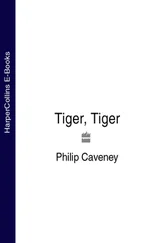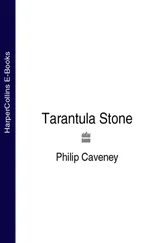The characteristic inhabitants of Howarth’s microcaverns are sometimes termed ‘the interstitial fauna’. They include a distinctive suite of specialized, skinny-bodied crustacea (such as Bathynella and various harpacticoid copepods) and other tiny creatures (such as rotifers, nematodes and tardigrades) which mostly like to be in contact with a solid surface on all sides and typically inhabit the spaces in between unconsolidated, fine-grained sediments such as the sand and gravel of river beds and the seashore. I propose, on purely arbitrary grounds, to exclude this fauna from further discussion in this book (except for species which also frequently inhabit larger spaces), and to restrict the definition of the cave habitat to holes of 1 mm diameter upwards, that is, to mesocavernous and macrocavernous habitats.
Various vertebrates use macrocavernous caves (and the larger mesocaverns) for shelter and they, and the other species which depend on their presence, form characteristic communities which reach astonishing levels of diversity and abundance in tropical regions. I shall long remember my first visit to the spectacular Deer Cave in the Gunung Mulu National Park in Sarawak, where at dusk close on half a million bats stream out of the cave in a seemingly-endless cloud which winds its way across the sky with a rush of wings like the sound of Niagara Falls. British bat-watchers have to be content with the odd flap, but in spite of declining populations, cave-roosting bats are still widespread and bat caves do support their own suite of associated ‘batellite’ cavernicoles. Other cavernicoles may, for example, be specifically associated with the guano of cave-roosting crickets, or with cave sediments introduced by sinking streams.
Mesocavern-sized holes not only occur within karstic rocks, but also in screes, in the coarse gravels and rocky beds of upland rivers, between the pebbles and cobbles of exposed sea-shores, in the fractured zone of non-karstic rocks (especially shales) just beneath the soil, and as cooling cracks in lava flows and other igneous rocks. They represent a very much larger habitable subterranean space than do macrocaverns and so have developed a richer and often more specialized fauna, frequently dominated by species peculiar to this habitat and characterized by a reduction in the size of the eyes, loss of pigment and various other specializations. These ‘mesocavernicoles’ may also occur in soil spaces, or animal burrows, or even in large macrocaverns, provided there is an adequate food supply of down-washed organic material and a fairly stable humid microclimate. Not all species within the mesocavernous fauna will be found in all related habitats; some do not seem to occur in soil-spaces, others shun human-sized caves.
Simply as a consequence of our own species’ enormous body-size, we are physically excluded from the very habitats which are most likely to harbour a specialized fauna. In the absence of appropriate tools with which to peer inside mesocavernous habitats, cave biologists have so far been forced to infer what they can about them from the behaviour of their biotas where they pop up in the accessible portions of people-sized caves. These act as windows into the mesocavernous world, but it seems likely that they provide a distorted view, encouraging widely differing interpretations of the nature of what has been observed. The present situation in cave biology is a bit like that which prevailed among astronomers a century or so ago, when dependence on inadequate earth-based optical telescopes sustained the widely-held belief that Mars was criss-crossed by an elaborate network of irrigation canals built by Martians. Speculation and controversy abound no less in cave biology literature, while cavernicolous communities remain enigmatic and under-recorded. As a result, new species await discovery in most subterranean habitats in every part of the world including the British Isles. In short the whole subject of cave biology is very much still in its infancy. A nice illustration of this turned up on my desk in the form of a report from Frank Howarth, announcing his discovery of a brand-new diverse fauna of highly specialized cavernicoles in lava caves in tropical Australia. For years Australia was thought to have a very poor fauna of specialized cavernicoles, and a number of papers sought to explain this on theoretical grounds. For example, it was argued that Australia’s climate during the Pleistocene had not been harsh enough to exterminate the above-ground populations of its cavernicoles, and so any tendency on their part towards specialization for underground life would be continually cancelled out by gene flow from outside the cave. Having wickedly sub-titled his paper Why there are so many troglobites [= highly specialized cavernicoles] in Australia , Howarth makes the telling point that “One has to actually enter a cave and look for troglobites before proclaiming on theoretical grounds that none could exist.” I offer this creed to the reader in the context of the British cave fauna. Let us, as naturalists, devise ways to find out what lives in our underground world and get down and study it at first hand.
I have distinguished between ‘interstitial’ (microcavernous) and ‘cave’ (meso- and macrocavernous) habitats on the grounds that their biotas are substantially distinct. We might expect a similar distinction to exist between ‘aquatic’ and ‘terrestrial’ cave communities. Certainly, there are some cavernicoles which are essentially aquatic, and others which are essentially terrestrial. However, the atmospheres of most mesocavernous, and of some macrocavernous, gas-filled habitats are permanently saturated with water vapour. This poses physiological problems for many groups of terrestrial arthropods which, unless equipped to eliminate excess water from their tissues (as aquatic species do), would quickly die of ‘water poisoning’ through dilution of their body fluids. Not surprisingly, ‘terrestrial’ mesocavernicoles have been found to be physiologically specialized to cope with a hydrating atmosphere and seem able to withstand long periods of immersion in freshwater – an adaptation which is essential in habitats which are frequently flooded by downward-percolating rainwater or by fluctuations in the water-table. Some seem equally at home in air or water, and can frequently be seen feeding on the floor of cave pools among their aquatic counterparts. Conversely, many freshwater aquatic mesocavernicoles seem able to cope with ‘terrestrial’ life without undue physiological stress and have been recorded as living out of water for several weeks at a time. So we see that the distinction between terrestrial and freshwater aquatic cave habitats is not exactly cut-and-dried, although there is a clear distinction between the communities present in either zone and those found in marine cave habitats.
Not all terrestrial cave habitats are moist. Large caves with more than one entrance often experience drying airflows which can produce desert-like conditions which are lethal to the hygrophilic denizens of the mesocaverns. However, such caves are often easily accessible and attractive to vertebrates, and may (especially in the tropics) support vast populations of bats, birds and guano-associated invertebrates. Guanobious animals exhibit few or none of the morphological characteristics considered by European cave biologists to be the mark of a ‘true cavernicole’ or ‘troglobite’, yet they may be just as exclusively cave-dwelling as any mesocavern specialist. Above-ground human structures are usually designed to be as dry as possible and are seldom completely dark, and this makes them suitable as a habitat for only a very few cave-threshold specialists, such as the daddy long-legs spider Pholcus phalangioides which presumably originated somewhere in the Mediterranean region, but in the UK is found only in houses. In between the dry, draughty macrocaverns and the soggy, airless mesocaverns, there may be wide expanses of transitional cave habitats with a variable microclimate, posing a distinct set of problems for the communities which inhabit them. Terrestrial inhabitants of such places must cope with the physiological stress of desiccation some of the time and physiological drowning for the rest of the time. In the tropics, transitional cave habitats may be particularly extensive, with their own specialized faunas, often dominated by ‘bandits’ – marauding predators and scavengers which live off the scraps of the guano-based community. Climatically similar conditions are found in man-made culverts and other artificial tunnels, and these frequently attract transitional-zone cavernicoles such as the widely distributed cave spider Meta menardi. Later we shall distinguish a range of natural and artificial cave habitats principally on the basis of their microclimatic regimes.
Читать дальше












